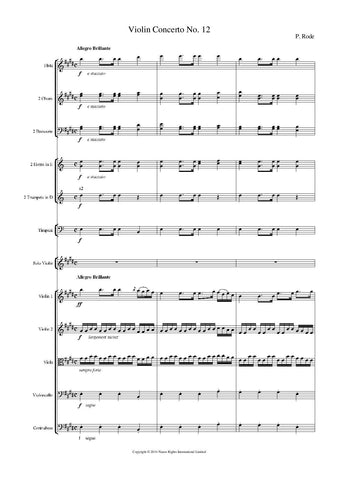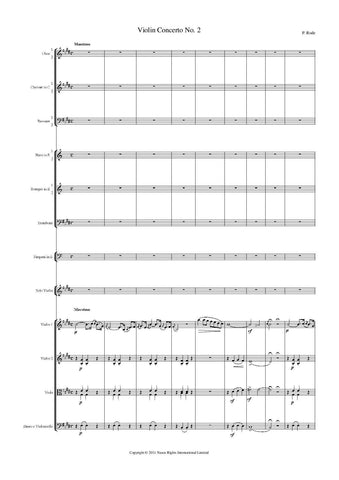Details
|
Violin Concerto No. 6 in B flat major, along with Violin Concerto No. 7, is perhaps the most famous of Pierre Rode's concertos. It is dedicated to the Queen of Spain, so almost certainly derives from Rode's visit to Spain in 1799-1800.
The opening Maestoso begins with a forte tutti, mostly material never taken up by the soloist (Rode's concertos contain baroque structural elements, and the orchestra often acts more as a ritornello than will be the case as the concerto develops throughout the nineteenth century), except for a brief peek at the dolce con anima theme that is the main lyric statement of the movement. The soloist's dramatic entry, beginning with upward-moving sixteenth notes (semiquavers), lands high on the E string. A lyric first theme, followed by passage-work, leads to the dolce con anima theme. After continuing passage-work and a tutti (echoing the ritornello-like orchestral statement of the beginning), the soloist begins the middle section by singing an extended passage on the G string, and then continues with triplets and a brief more lyric section. The tutti-ritornello leads to a repeat of the soloist's opening flourish, though now with a different continuation and a shorter statement of the dolce con anima theme. A cadenza and final tutti end the movement. The Adagio features one of Rode's most winsome lyric statements, and is played in various octaves and with a slightly contrasting middle section. The Allegretto finale is one of Rode's inventive and good-humored finales, and contains various statements of the rondo tune, slightly slower, slightly, now interrupted by passage-work and now by a different tune, and ending with a delightful coda.
|














